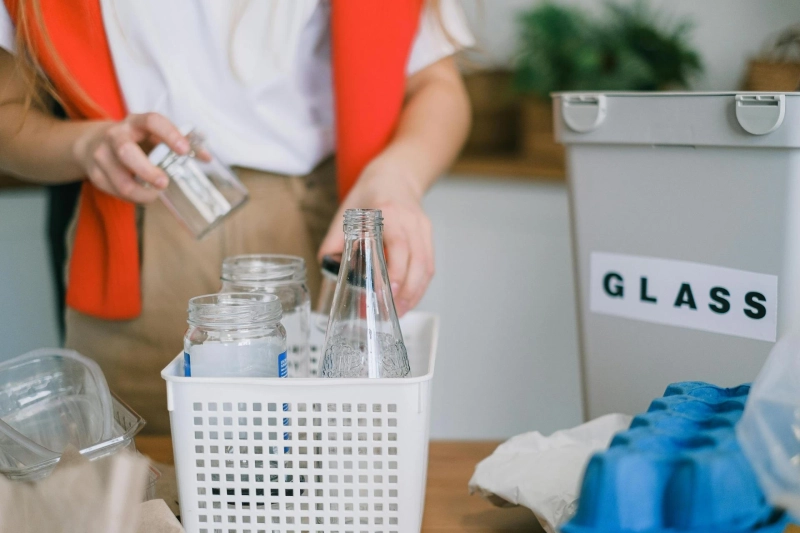Protective glass coatings are more than clear shields for surfaces and windows. They provide eco-friendly benefits that minimize environmental degradation and promote sustainable living. Homes and businesses can reduce cleaning chemicals, prolong the lifespan of glass installations, and increase energy efficiency by using these coatings. Properly selected, protective glass coatings can save resources and decrease carbon footprints. This handbook delves into five important environmental advantages of applying protective glass coatings, demonstrating how a tiny technology upgrade has far-reaching green benefits.
1. Prevents Chemical Cleaning Agents
Conventional glass cleaning tends to use harsh chemicals that contaminate waterways and the environment. Protective glass coatings form a smooth, nonstick finish that cleans away dirt, water spots, and grime. This translates to fewer cleaning cycles and reduced use of aggressive detergents or sprays. With only water or gentle soap, coated glass remains clear and streak-free. Reducing the use of chemicals safeguards indoor air quality and stops toxic runoff from entering drains. It's a quick switch that has a significant environmental impact. By reducing harsh cleaners, households and businesses both help keep rivers cleaner, wildlife habitats safer, and the planet healthier.
2. Extends Glass Lifespan
Windows, shower panels, or solar panels replaced use up resources and produce waste. Coatings on protective glass protect surfaces from scratches, stains, and etching from weather or general wear. The protective barrier maintains clarity and strength over decades of service. Rather than replacing and installing new glass every few years, coated surfaces remain like new for many years longer. The lower demand for replacements minimizes the manufacturing, shipping, and installation emissions associated with new glass production. This durability results in fewer materials consumed and less glass waste in landfills, enabling a circular economy that rewards durability over disposability.
3. Increases Energy Efficiency
Windows and solar installations contribute significantly to a building's energy profile. Grime and mineral deposits on glass surfaces can impede sunlight and decrease efficiency. A coating protects panels from clouding and optimizes the transmission of light. Solar panels, for example, work optimally when free from cloud cover. An effective solar panel coating is water-repellent and dust-repellent, and that means more sunlight hits photovoltaic cells. That increased amount means greater energy production and reduced use of fossil-fuel backup systems. Clean glass windows also permit more natural light indoors. That reduces artificial lighting and decreases heating expenses during cold seasons. Improved efficiency reduces energy consumption and reduces green gas emissions.
4. Preserves Water Resources
Glass cleaning can be a water-waster, particularly when it comes to big installations such as commercial glass or automobile windshield glass. It takes large amounts of water per rinse and wipe. Protective coatings on glass turn the surface hydrophobic, meaning water beads and roll off them. This implies fewer rinses and quicker cleansing. For most situations, a rapid spray and squeegee are sufficient to keep it clear. Over the years, saved water adds up, particularly in areas under drought or water restriction. Saving water for cleaning purposes helps to conserve this valuable resource. It also reduces utility costs and decreases the energy needed to pump and treat water, providing a twofold environmental advantage.
5. Reduces the Carbon Footprint of Maintenance
Maintenance cycles tend to include repeated visits by service technicians, transportation emissions, and regular chemical shipments. With protective glass coatings, maintenance cycles can be far apart. Fewer service calls translate into less fuel consumption and emissions. Less frequent shipments of cleaning materials also reduce packaging waste and transport emissions. Homeowners and businesses can switch to cleaner cleaning techniques with little effect on staff time or budgets. With years of decreased maintenance requirements, the total decrease in carbon impact is quite significant. This process proves how preventive actions can lower long-term environmental expenses while maintaining glass surfaces in spotless condition.
Conclusion
Protective glass coatings provide tangible, long-term benefits to users and the environment alike. With decreased chemical cleaners, longer glass life, increased energy efficiency, water conservation, and decreased maintenance carbon footprints, these coatings facilitate sustainable living and operations. They provide a functional means to green everyday habits without compromising performance or beauty. For home windows, shower enclosures, or solar installations, protective glass coatings offer a green upgrade that is worth the investment in terms of environmental benefits and cost savings.



